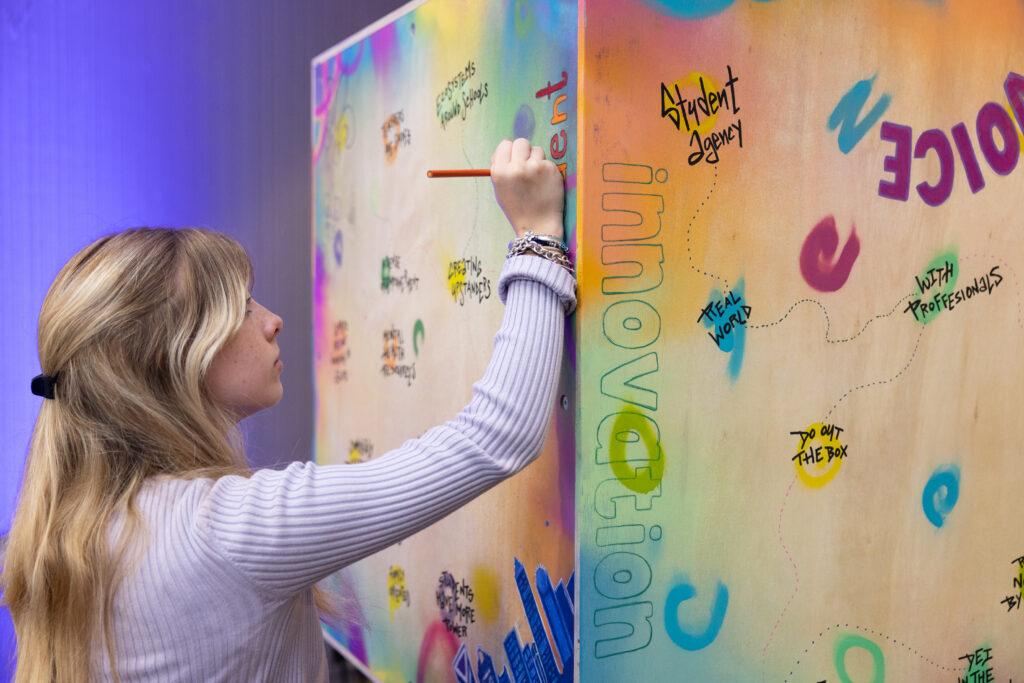Most people have probably never heard of “intentionally diverse” schools – those designed to create and maintain a diverse student population in terms of race, income and culture. They are a relatively new concept, based on the idea that students will learn more – and better – in environments where they are able to work alongside people who come from different backgrounds. A handful of the schools we fund at NewSchools are taking up this challenge. They were created specifically to prepare students to connect and relate across their differences. We’ve interviewed several of these school leaders, and encourage you to dig into our new report that chronicles their journeys and what they’ve learned.
But, just case you’re short on time, here’s the condensed version…
 Why Intentionally Diverse Schools?
Why Intentionally Diverse Schools?
In addition to a strong academic preparation, these schools are also committed to giving students a grounding that respects, values and understands people of diverse origins. School leaders believe all students in intentionally diverse schools will be better equipped with the mindsets, skills and habits they need to be successful in our constantly changing world. However, as they quickly learned, getting a diverse population in the door is only one small part of setting these schools and students up for success. Maintaining an intentionally diverse school takes a lot of effort – with special attention to recruiting, fostering a welcoming environment and making sure the school and its resources are truly accessible to all. Key takeaways from the school leaders include:
 Creating a Culture of Belonging
Creating a Culture of Belonging
An intentionally diverse school is not just about a diverse student body, it’s about fostering cooperation and collaboration across different student populations. This means thinking past demographics to the school’s mission, culture and curriculum. The school leaders we interviewed told us how important it is to take the necessary time and effort to grow a culture of belonging at their school. For example, one school researched how learning is impacted by diversity, while another school supports teachers with creating safe classroom spaces that can prompt conversations about diversity, equity and inclusion. The school leaders make sure their schools live into their missions – they facilitate intentional conversations when bias appears at their schools, and they speak out about tolerance and diversity in their communities.
 Recruiting Targeted Populations
Recruiting Targeted Populations
While all schools need to recruit students before opening their doors, intentionally diverse schools take a different approach from other schools. In addition to the initial recruitment challenge that all schools face, intentionally diverse school must maintain targeted, long-term recruitment plans that are revisited and tweaked each year to ensure they continue to meet their diversity goals. The school leaders we interviewed told us recruitment starts long before sending a mailer or organizing a school tour – it begins with building deep relationships with community members and families, and communicating how an intentionally diverse school can meet their needs both academically and socially.
 Reducing Barriers to Enrollment
Reducing Barriers to Enrollment
Families may be hesitant to enroll in an intentionally diverse school for a variety of reasons. And a diverse group of families means a wide array of needs that require careful thought and planning. Common barriers to enrollment the school leaders are constantly addressing include school location, transportation access, childcare options, communication, and equitable access to technology and extracurricular activities. For example, charter schools don’t typically provide transportation, but one school leader we spoke with bought a bus to accommodate low-income families who couldn’t otherwise attend her school, while another provides mailings in four languages to make sure her communications can be read by everyone in the community.
With all of these additional considerations needed to create an intentionally diverse school, why pursue this work? Each of the school leaders interviewed offered the same answer in different words: they believe encouraging a culture of acceptance and cooperation in the next generation will help advance equity for all. We hope the experiences of these school leaders will be useful for others who are working to create an intentionally diverse school in their community. Also, if you or someone you know is thinking of opening an intentionally diverse school, funding is still available from NewSchools to support this work.


